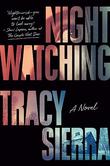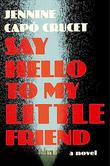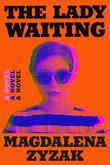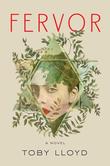
by Lois Lowry ; illustrated by Jonathan Stroh ‧ RELEASE DATE: Feb. 14, 2023
Valuable metafiction for young readers.
A venerated author interweaves an archaeological mystery—the 1952 discovery in Germany of an adolescent mummified in a peat bog two millennia ago—with the stories it inspired her to write.
The book opens by providing scientific and historical context from similar finds elsewhere and explaining how peat bogs preserve bodies and the way radiocarbon dating works. Lowry describes how she felt inspired to create a story for the Windeby Girl, whom she names Estrild, and whose tale follows, told in two linked stories. Estrild persuades Varick, a sickly boy, to teach her warrior skills forbidden to girls. When the druid priests next select the boys who will become warriors, Estrild’s determined she will stand with them. A middle section describes how recent scientific discoveries changed theories about the Windeby Girl, leading Lowry to write the second iteration centering Varick. In the final part of the book, Lowry explains how it felt to tell the stories of these young protagonists and why she was compelled to do so. While both stories feature vintage Lowry strengths—strong worldbuilding, compassionate characters—it’s the sections explaining her authorial decisions that stand out and will encourage readers to reflect upon how history is told and about whom. This book, her answer to probing questions, beautifully illustrates the interaction between idea and execution, illuminating the architecture of storytelling. Dramatic full-page art by Stroh as well as photographs add intrigue.
Valuable metafiction for young readers. (photo credits, bibliography, historical notes, discussion questions) (Fiction/nonfiction hybrid. 9-13)Pub Date: Feb. 14, 2023
ISBN: 978-0-358-67250-0
Page Count: 224
Publisher: Clarion/HarperCollins
Review Posted Online: Oct. 25, 2022
Kirkus Reviews Issue: Nov. 15, 2022
Share your opinion of this book
More by Lois Lowry
BOOK REVIEW
by Lois Lowry
BOOK REVIEW
by Lois Lowry
BOOK REVIEW
by Lois Lowry ; illustrated by Kenard Pak

by Dav Pilkey & illustrated by Dav Pilkey ‧ RELEASE DATE: Aug. 28, 2012
Is this the end? Well, no…the series will stagger on through at least one more scheduled sequel.
Sure signs that the creative wells are running dry at last, the Captain’s ninth, overstuffed outing both recycles a villain (see Book 4) and offers trendy anti-bullying wish fulfillment.
Not that there aren’t pranks and envelope-pushing quips aplenty. To start, in an alternate ending to the previous episode, Principal Krupp ends up in prison (“…a lot like being a student at Jerome Horwitz Elementary School, except that the prison had better funding”). There, he witnesses fellow inmate Tippy Tinkletrousers (aka Professor Poopypants) escape in a giant Robo-Suit (later reduced to time-traveling trousers). The villain sets off after George and Harold, who are in juvie (“not much different from our old school…except that they have library books here.”). Cut to five years previous, in a prequel to the whole series. George and Harold link up in kindergarten to reduce a quartet of vicious bullies to giggling insanity with a relentless series of pranks involving shaving cream, spiders, effeminate spoof text messages and friendship bracelets. Pilkey tucks both topical jokes and bathroom humor into the cartoon art, and ups the narrative’s lexical ante with terms like “pharmaceuticals” and “theatrical flair.” Unfortunately, the bullies’ sad fates force Krupp to resign, so he’s not around to save the Earth from being destroyed later on by Talking Toilets and other invaders…
Is this the end? Well, no…the series will stagger on through at least one more scheduled sequel. (Fantasy. 10-12)Pub Date: Aug. 28, 2012
ISBN: 978-0-545-17534-0
Page Count: 304
Publisher: Scholastic
Review Posted Online: June 19, 2012
Kirkus Reviews Issue: July 15, 2012
Share your opinion of this book
More In The Series
by Dav Pilkey ; illustrated by Dav Pilkey
More by Dav Pilkey
BOOK REVIEW
by Dav Pilkey ; illustrated by Dav Pilkey color by Jose Garibaldi & Wes Dzioba
BOOK REVIEW
by Dav Pilkey ; illustrated by Dav Pilkey ; color by Jose Garibaldi & Wes Dzioba
BOOK REVIEW
by Dav Pilkey ; illustrated by Dav Pilkey ; color by Jose Garibaldi & Wes Dzioba

by J. Torres ; illustrated by David Namisato ‧ RELEASE DATE: Oct. 5, 2021
An emotional, much-needed historical graphic novel.
Sandy and his family, Japanese Canadians, experience hatred and incarceration during World War II.
Sandy Saito loves baseball, and the Vancouver Asahi ballplayers are his heroes. But when they lose in the 1941 semifinals, Sandy’s dad calls it a bad omen. Sure enough, in December 1941, Japan bombs Pearl Harbor in the U.S. The Canadian government begins to ban Japanese people from certain areas, moving them to “dormitories” and setting a curfew. Sandy wants to spend time with his father, but as a doctor, his dad is busy, often sneaking out past curfew to work. One night Papa is taken to “where he [is] needed most,” and the family is forced into an internment camp. Life at the camp isn’t easy, and even with some of the Asahi players playing ball there, it just isn’t the same. Trying to understand and find joy again, Sandy struggles with his new reality and relationship with his father. Based on the true experiences of Japanese Canadians and the Vancouver Asahi team, this graphic novel is a glimpse of how their lives were affected by WWII. The end is a bit abrupt, but it’s still an inspiring and sweet look at how baseball helped them through hardship. The illustrations are all in a sepia tone, giving it an antique look and conveying the emotions and struggles. None of the illustrations of their experiences are overly graphic, making it a good introduction to this upsetting topic for middle-grade readers.
An emotional, much-needed historical graphic novel. (afterword, further resources) (Graphic historical fiction. 9-12)Pub Date: Oct. 5, 2021
ISBN: 978-1-5253-0334-0
Page Count: 112
Publisher: Kids Can
Review Posted Online: June 28, 2021
Kirkus Reviews Issue: July 15, 2021
Share your opinion of this book
More by J. Torres
BOOK REVIEW
BOOK REVIEW
by J. Torres ; illustrated by Aurélie Grand
BOOK REVIEW
© Copyright 2024 Kirkus Media LLC. All Rights Reserved.
Hey there, book lover.
We’re glad you found a book that interests you!
We can’t wait for you to join Kirkus!
It’s free and takes less than 10 seconds!
Already have an account? Log in.
OR
Trouble signing in? Retrieve credentials.
Welcome Back!
OR
Trouble signing in? Retrieve credentials.
Don’t fret. We’ll find you.





